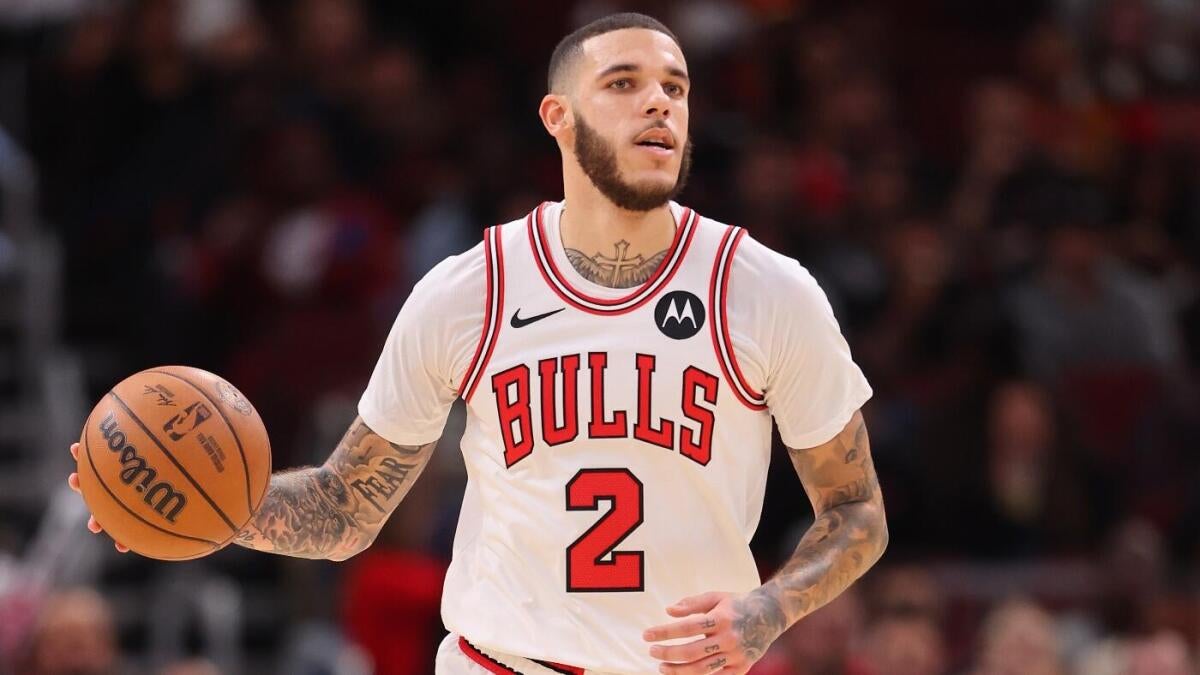The 2025 NBA offseason trade between the Chicago Bulls and the Cleveland Cavaliers, which saw Lonzo Ball sent to Cleveland in exchange for Isaac Okoro, was a transaction that, while not involving superstar players, carried significant implications for both franchises. This trade was a strategic move that reflected the differing priorities and long-term visions of the two teams. The Bulls, in the midst of a rebuild, sought to shed veteran players and accumulate younger talent, while the Cavaliers aimed to bolster their roster with a versatile guard to support their championship aspirations.
From the Bulls’ perspective, the trade marked the end of Lonzo Ball’s tenure with the team. Ball had shown flashes of brilliance during his time in Chicago, but his career had been marred by injuries and inconsistency. His statistics during the recent season—7.6 points, 3.4 rebounds, and 3.3 assists per game, with shooting percentages of 36.6% from the field and 34.4% from beyond the arc—reflected his struggles to maintain a consistent level of performance. Despite these challenges, Ball had become an integral part of the Bulls’ rotation, and his departure signaled a shift in the team’s strategic direction. The Bulls were entering a rebuilding phase, seeking to create roster flexibility and identify players who aligned with their long-term vision. Isaac Okoro, despite his offensive limitations, represented a younger, athletic wing defender with potential upside, particularly on the defensive end. His struggles with jump shooting had hindered his development, but the Bulls saw an opportunity to reshape their roster around promising youth. Additionally, the trade followed the Bulls’ decision to part ways with other veterans like Zach LaVine, indicating a commitment to roster turnover and asset accumulation ahead of upcoming drafts and free agency.
For the Cavaliers, the acquisition of Lonzo Ball was a tactical move designed to strengthen their backcourt depth. The Cavaliers had just completed a remarkable 64-win season, but their roster still lacked a proven veteran presence who could contribute steady minutes off the bench and serve as a secondary playmaker. Ball’s versatility as a combo guard, combined with his size (6-foot-6) and playmaking skills, made him an ideal fit for Cleveland’s needs. Despite his injury history, Ball had demonstrated resilience, finishing the 2024-25 season relatively healthy. His ability to distribute and defend multiple positions complemented Cleveland’s style of play and bolstered their championship aspirations. The Cavaliers viewed this deal as a low-risk, high-reward opportunity—a veteran guard who could enhance their rotation without severely compromising cap space or draft assets.
When comparing the two players involved in the trade, Lonzo Ball and Isaac Okoro each brought unique strengths and weaknesses to the table. Ball’s strengths included his high basketball IQ, defensive versatility, and playmaking ability, which made him a valuable asset on the court. However, his injury-prone history and inconsistent shooting, particularly from three-point range, raised concerns about his long-term reliability. His contract, a two-year, $20 million deal with a team option, was manageable for the Cavaliers and provided them with flexibility. In contrast, Okoro’s strengths lay in his athleticism, defensive aptitude, and potential for growth. His offensive limitations and inconsistent jump shooting were areas of concern, but his youth and defensive skills made him an attractive prospect for the Bulls. Okoro’s contract, carrying a $33 million price tag, was more burdensome for a rebuilding team but was offset by his potential to develop into a key player.
Evaluating the trade from the perspective of both teams, the Cavaliers emerged as the clear beneficiaries. The acquisition of Lonzo Ball addressed their immediate needs for a versatile guard who could contribute to their championship aspirations. Ball’s ability to play at multiple guard positions and defend multiple areas on the court enhanced Cleveland’s adaptability and depth. The Bulls, on the other hand, took on a more questionable swap by acquiring Okoro. While Okoro’s defensive potential was appealing, his offensive struggles and recent decline in productivity raised questions about the value of the trade compared to the established floor that Ball provided. From a rebuilding standpoint, the move was understandable, but it marked a gamble on Okoro’s ability to recapture or exceed his earlier trajectory.
The strategic implications of the trade were significant for both teams. For the Bulls, the acquisition of Okoro fit their long-term vision of developing young, athletic players with defensive potential. The trade also freed up cap space for future maneuvers or talent acquisition, allowing the Bulls to maintain roster flexibility. However, the team would need to address offensive consistency and floor spacing in the longer term, as Okoro’s offensive ceiling remained uncertain. The Cavaliers, meanwhile, signaled a win-now mentality with the acquisition of Ball. The addition of a veteran guard enhanced their guard depth and provided insurance behind Darius Garland. This move aligned with Cleveland’s aim to blend youthful energy with experienced role players, positioning them as a tougher contender in the Eastern Conference.
In conclusion, the Lonzo Ball for Isaac Okoro trade highlighted the contrasting priorities of the Chicago Bulls and the Cleveland Cavaliers. The Cavaliers made a savvy win-now move by acquiring a versatile guard who could bolster their championship aspirations, while the Bulls took a calculated risk by betting on the defensive potential of a younger player. The trade underscored the different philosophies of the two franchises—Cleveland seeking to maximize their championship window, and Chicago scheming toward an eventual turnaround. Ultimately, the Cavaliers emerged as the beneficiaries of the deal, while the Bulls’ swap remained a questionable but understandable move in their organizational rebuild. The success of the trade would be measured in the coming seasons by how well each player adapted to their new environment and by the trajectories of the Bulls’ rebuild and the Cavaliers’ contention window.











